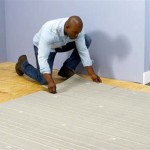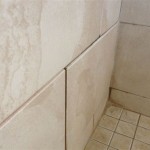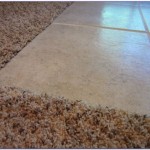How Do You Remove Tough Stains From Bathroom Tiles?
Bathroom tiles are prone to various stains, from soap scum and hard water deposits to mildew and rust. These stubborn stains can make your bathroom look dull and unhygienic. Fortunately, with the right techniques and cleaning agents, you can effectively remove even the toughest stains and restore the shine to your bathroom tiles.
Identify the Stain
Before attempting to remove any stain, it is crucial to identify its source. This will help you choose the most effective cleaning method and avoid damaging your tiles. Common bathroom tile stains include:
- Soap scum: A whitish film often found in shower stalls and tubs, caused by the buildup of soap residue and minerals.
- Hard water deposits: Mineral deposits, usually calcium and magnesium, that leave behind white or yellowish stains.
- Mildew: A type of fungus that thrives in damp environments and creates black or greenish spots.
- Rust: Reddish-brown stains caused by iron oxide, often appearing from metal fixtures or pipes.
- Grout stains: Discoloration of the grout lines between tiles, caused by dirt, grime, and moisture.
Cleaning Techniques for Common Bathroom Tile Stains
Once you've identified the type of stain, you can select the appropriate cleaning technique. Here's a breakdown of effective methods for common bathroom tile stains:
Soap Scum and Hard Water Deposits
For soap scum and hard water deposits, a combination of gentle abrasives and acidic cleaning agents can be effective. You can use the following methods:
- Baking soda paste: Mix baking soda with water to form a thick paste. Apply it to the affected area and let it sit for 15-20 minutes before scrubbing with a non-abrasive sponge or brush. Rinse thoroughly with water.
- Vinegar: White vinegar is a natural acid that can dissolve soap scum and mineral deposits. Pour undiluted vinegar onto the stain and let it sit for 15-30 minutes. Then, scrub with a sponge and rinse with water.
- Commercial cleaners: There are many commercial cleaners specifically designed to remove soap scum and hard water deposits. Follow the instructions on the product label carefully.
Mildew
Mildew requires a different approach, as it's a living organism. You can use these methods to combat mildew:
- Bleach solution: Mix bleach with water in a ratio of 1:10. Apply the solution to the mildew-affected area and allow it to sit for 10-15 minutes. Then, scrub with a brush and rinse thoroughly with water.
- Tea tree oil: Tea tree oil has natural antifungal properties. Dilute a few drops of tea tree oil in water and apply it to the mildew. Let it sit for a few minutes before scrubbing and rinsing.
- Borax solution: Mix borax with water to create a paste. Apply the paste to the affected area and let it sit for 30 minutes. Then, scrub with a brush and rinse with water.
Rust
Removing rust requires a stronger cleaning agent, such as:
- Lemon juice: Lemon juice contains citric acid, which can help break down rust. Apply fresh lemon juice to the rust stain and let it sit for 30 minutes. Then, scrub with a brush and rinse with water.
- Commercial rust remover: You can find specialized rust removers at hardware stores. Follow the instructions on the product label carefully.
Grout Stains
Grout stains can be removed using the following methods:
- Grout cleaner: Specialized grout cleaners are available at most home improvement stores. They are designed to remove dirt, grime, and discoloration from grout. Follow the instructions on the product label for best results.
- Baking soda and vinegar: Apply a mixture of baking soda and vinegar to the stained grout. Allow it to fizz for a few minutes before scrubbing with a toothbrush. Then, rinse thoroughly.
- Oxygen bleach: Oxygen bleach is a gentler alternative to chlorine bleach and can be used to whiten grout. Mix oxygen bleach with water according to the product instructions and apply it to the stained grout. Allow it to sit for 30 minutes before scrubbing and rinsing.
Cleaning Tips for Bathroom Tile Stains
Here are some additional tips to help you effectively remove tough stains from your bathroom tiles:
- Wear gloves and eye protection: Many cleaning products contain harsh chemicals that can irritate your skin and eyes.
- Test the cleaner in an inconspicuous area: Before applying any cleaning solution to your entire tile surface, test it on a small, hidden area to ensure it doesn't cause discoloration or damage.
- Work in well-ventilated areas: When using bleach or other strong cleaning agents, work in a well-ventilated area to avoid inhaling fumes.
- Rinse thoroughly: After cleaning, rinse the tiles thoroughly with water to remove any residue.
- Dry the tiles: Wipe the tiles with a clean, dry cloth to prevent water spots and promote faster drying.
- Regular maintenance: Regular cleaning and maintenance can help prevent the buildup of stains and improve the longevity of your bathroom tiles.
By following these tips and techniques, you can effectively remove tough stains from your bathroom tiles and keep them looking their best.

3 Best Ways To Get Rid Of Hard Water Stains From Bathroom Tiles Kent

How To Remove Stains From Bathroom Tiles

3 Ways To Remove Stains From Tiles Wikihow

How To Remove Stains From Bathroom Tiles

Home Remedies To Remove Bathroom Tiles Stubborn Stains

How To Remove Hard Water Stains From Tile And Grout Woodard

7 Most Powerful Ways To Clean Tiles Grout Naturally

3 Best Ways To Get Rid Of Hard Water Stains From Bathroom Tiles Kent

How To Clean Bathroom Tiles Problems With Their Solutions 2024

10 Ways To Clean And Remove Stains From Bathroom Tiles Bria Homes
Related Posts








